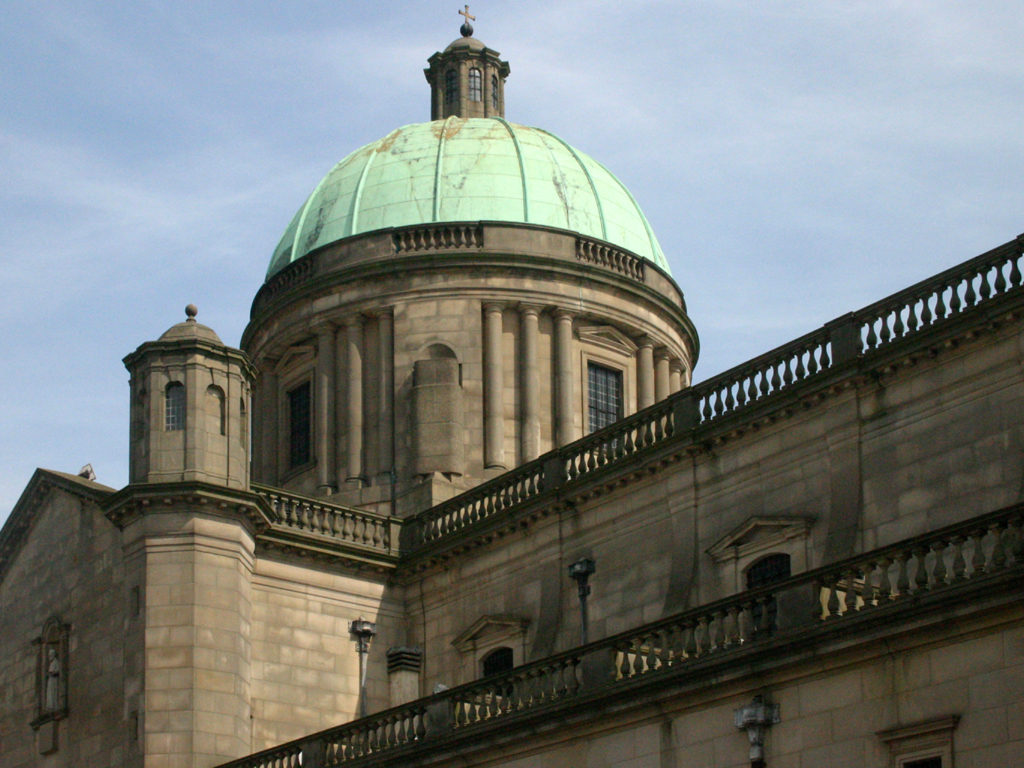I believe that in order to fully understand The Lord of the Rings or The Hobbit or even The Silmarillion, a reader needs to study his primary influence. Even Tolkien does not hide that his masterpiece is Catholic at its core:
“The Lord of the Rings is of course a fundamentally religious and Catholic work; unconsciously so at first, but consciously in the revision” (Letters of J.R.R. Tolkien).
[featured-image single_newwindow=”false”]
Yet, while we often use this line to justify The Lord of the Rings’ catholicity, what does that really mean? What is this Catholicism that Tolkien infused? In order to discover the meaning behind those words of Tolkien, we must go back and discover the Catholicism he lived from his early years as a child.
It all started in 1900 when Mabel Tolkien received instruction in the Catholic faith at Saint Anne’s in Birmingham and was officially welcomed into the Church along with her sister May Incledon in June of that same year.
Previous to that moment, Mabel’s husband had died and as a family they were attending a “high” Anglican church each Sunday. It was during this time that she was seriously considering converting to the Catholic Church. Why did she? It is not easily surmised.
Search for Truth
Mabel’s father was raised Methodist and became a Unitarian. Much of the Tolkien family were Baptists and intensely opposed to Catholicism. To make it more confusing, Mabel and Arthur had John Ronald Reuel baptized in an Anglican Cathedral in Bloemfontein, South Africa. In essence they did not have an attachment to any particular church.
Yet, many conversion stories have a similar thread of “seeking” the truth. Even today in modern America there is an increasing amount of people who constantly move from one denomination to the next. In the end we all desire the truth and so Mabel was led by that desire to discover where that truth was located.
“High” Anglicanism
One thing we do know is that she started to attend a “high” Anglican church. This type of church is very much akin to Roman Catholicism. They possess all the “smells and bells,” “stained glass,” sacramental rituals and many of the same beliefs. Among all the Protestant reforms, the Church of England did not split because of fundamental Church doctrine. In the end, it was more a matter of politics (more on this topic in the coming weeks). As a result, Anglicans kept much of the deposit of traditional Catholic teaching and liturgy and only over time did it start to drift away from Catholicism.
Shortly before Mabel’s search for the truth there also began what was called the “Oxford-Movement,” which was led in part by well-known Anglican priest John Henry Newman. This movement possessed many members from the University of Oxford and their intention was to reclaim lost traditions of the Anglican church and to reinstate them both in the liturgy and in theology. One example of this was the renewal of religious orders in the Anglican tradition. The influence of this movement was quite large and affected Anglicanism as a whole.
However, they became known as “Anglo-Catholics,” because they believed they were somehow still connected to the Catholic Church. In the end, it was because of that close affinity to Roman Catholicism that many of them made the ultimate switch to the Catholic Church. Notable converts among them were John Henry Newman (who is now on his way to Sainthood in the Catholic Church) and the famous poet Gerard Manley Hopkins.
Consequently in this context we can see how Mabel Tolkien could have converted to the Catholic Church. In a sense she was already half-way there in the Anglo-Catholic movement. Who knows, maybe it was the example of these prominent Anglicans that first set the fire in Mabel’s heart to seek out Roman Catholicism. In the end, what we do know is that J.R. R. Tolkien from a very young age was immersed in a religion of symbols and beauty.
Both “high” Anglicanism and the Roman Catholic Church pride themselves in rich imagery and complex liturgy. As a result, J.R.R. Tolkien was formed in this context and it is no doubt that this rich faith tradition found its way into his writings.
Yet, probably one of the most important aspects of Mabel’s conversion was her steadfastness in persecution. More on this in a future article.

